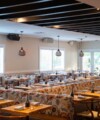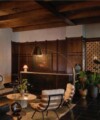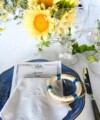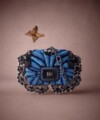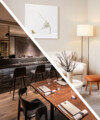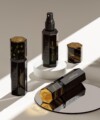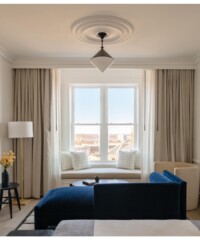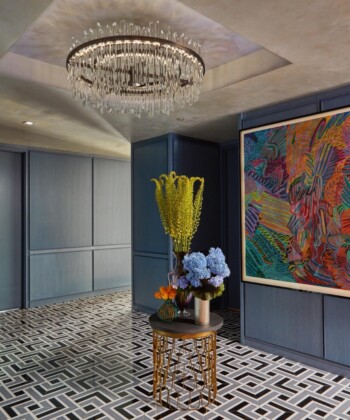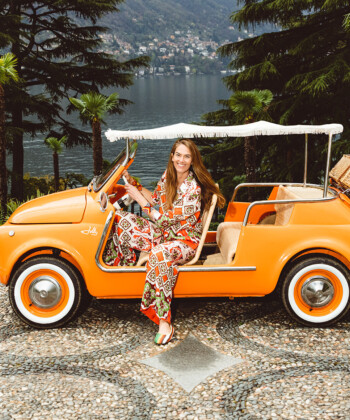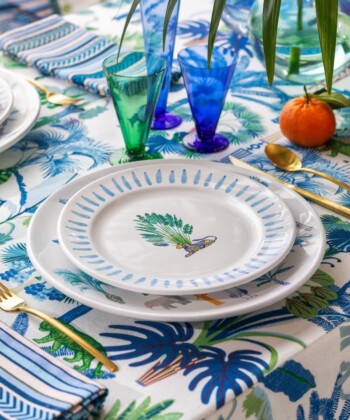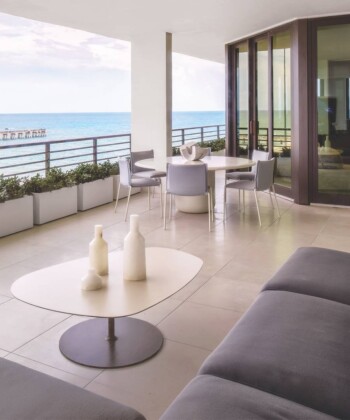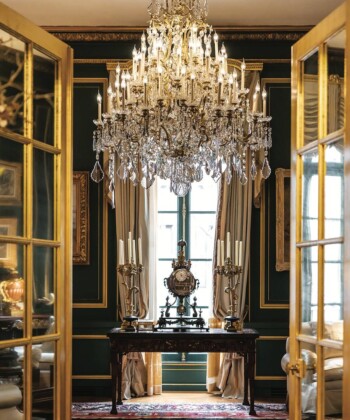Thirty miles west of Albany, New York, Sarah Ryhanen is having a slow day. It’s the lull between wedding seasons, and the floral designer is on her 107-acre Worlds End farm—a “frozen tundra” in late January—where she grows the rare, romantic flowers and greenery for Saipua, her flower and soup boutique. “It sounds luxurious to have so much free time, but I do best in highly agitated environments—probably why I love working on weddings so much,” she says. “I’m learning this winter how to be still. I’ll be better when spring starts up and I’ve got a million things to do.”
When she’s not upstate, Ryhanen is doing a million things in Brooklyn, where Saipua is located. It’s also where the self-taught floral designer runs a flower-arranging school more for the growing set of DIY design enthusiasts than green-thumb types. Ryhanen is part of a new breed of floral designers shifting the aesthetic away from traditionally symmetric bouquets and over-styled arrangements to something more free-form. “I worked in lots of galleries—the last was a non-profit space committed to emerging artists from around the world,” she says. “Its mission and history of promoting art on the fringe and taking serious risks was inspiring. There were no limits, no boundaries.”
Such an artful perspective puts Ryhanen on the cusp of modern floral design, which, interestingly enough, is about going back to the roots. “There is definitely a big trend towards using local product, which I love for so many reasons. Know your farmer, know your flowers,” says Ryhanen, whose work is inspired most by gardens, nurseries with unusual plants and the flower paintings of Dutch masters. “We just get better flowers when we can talk to the people who are growing them. That trend goes hand in hand with the trend of looser, more garden-inspired arrangements.”
Below, Ryhanen shares her tips for decorating the home with flowers using what’s available from the grocery store or bodega and your own yard.
The Foyer

The look to achieve: Drama! The foyer is a place for large impressions.
What to ask for: In spring, always ask for tall blooming branches—quince, crabapple, dogwood or viburnum.
How to arrange it: Big branches in a tall crystal vase or clear glass cylinder need little “arranging.” Just be sure that people can walk by without catching their clothing on a branch.
How to take care of it: Add a cap full of bleach to the water…this will keep the water (in a clear vase especially) from getting murky. Branches will often last over a week, and the longer they are in that water, the more you’ll want that little bit of bleach to keep the water clean and clear looking.
The Kitchen

The Look to achieve: Simple, rustic, loose
What to ask for: One large terracotta jug of mixed herbs or olive branches
What to avoid: Fussy, over-styled flowers. The kitchen is a busy place for working, so composed arrangements often feel out of place here.
How to arrange it: Clean the bottom of your branches or herb stems and “jam them” (my favorite flower arranging term) in a jar or pitcher.
How to take care of it: Change the water every day, especially with things like herbs which are prone to wilt easily.
When in doubt: A single stem of something simple—a ranunculus or poppy–next to the sink where you’ll see it often is always nice.
The Dining Room

The look to achieve: Grand elegance!
What to ask for: A big beautifully arranged mix of flowers that can drip out onto the dining table
What to avoid: A fussy, round mound of roses. That sort of thing should never happen anymore.
How to arrange it: Take a low silver bowl or a footed compote and adhere a flower frog in the bottom. Use the flower frog to secure your stems. Remember to cut some very short—you want a layered mix of flowers with some hidden very deep, and other floating above the rest. If it’s autumn, I always love to mix in some seasonal fruit like Seckle pears or persimmons.
How to take care of it: Top the water off every day. With a lot of thirsty stems in a shallow bowl or compote, you’ll need to remember to add water daily so they don’t dry out.
When in doubt: Make a collection of bud vases or little bottles in the middle of the table and make a composition of single stems. You can’t go wrong with seven or nine beautiful ranunculus on display individually. Odd number always though!
The Bedroom

The look to achieve: Something sweet smelling and simple next to the bed
What to ask for: A julep cup filled with sweet peas is divine. Or a small container of muscari (mixing blue “sky jacket” hyacinth with grape hyacinth would be lovely).
What to avoid: Anything too big, or too fragrant—you want something sweet smelling, but nothing overpowering. Avoid lilies or certain narcissus which can be highly fragrant.
When in doubt: Again, a single stem here is always lovely.
The Saipua Style





All photos courtesy of Saipua
MORE:
The Beautiful, Practical Move Towards the “Unkitchen”
5 Top Trends in Modern Home Design
Inside an Interior Designer’s Fifth Avenue Apartment





